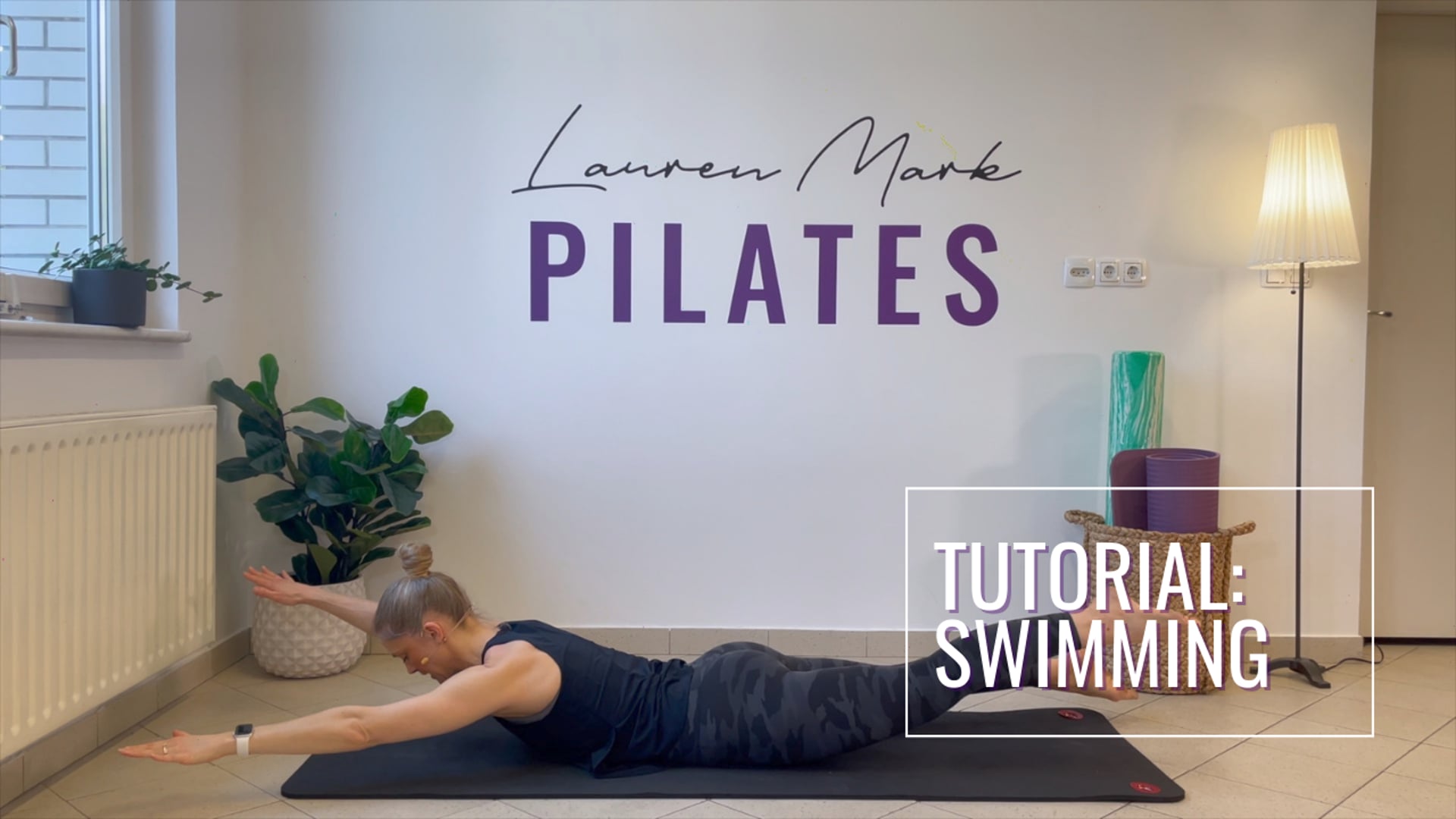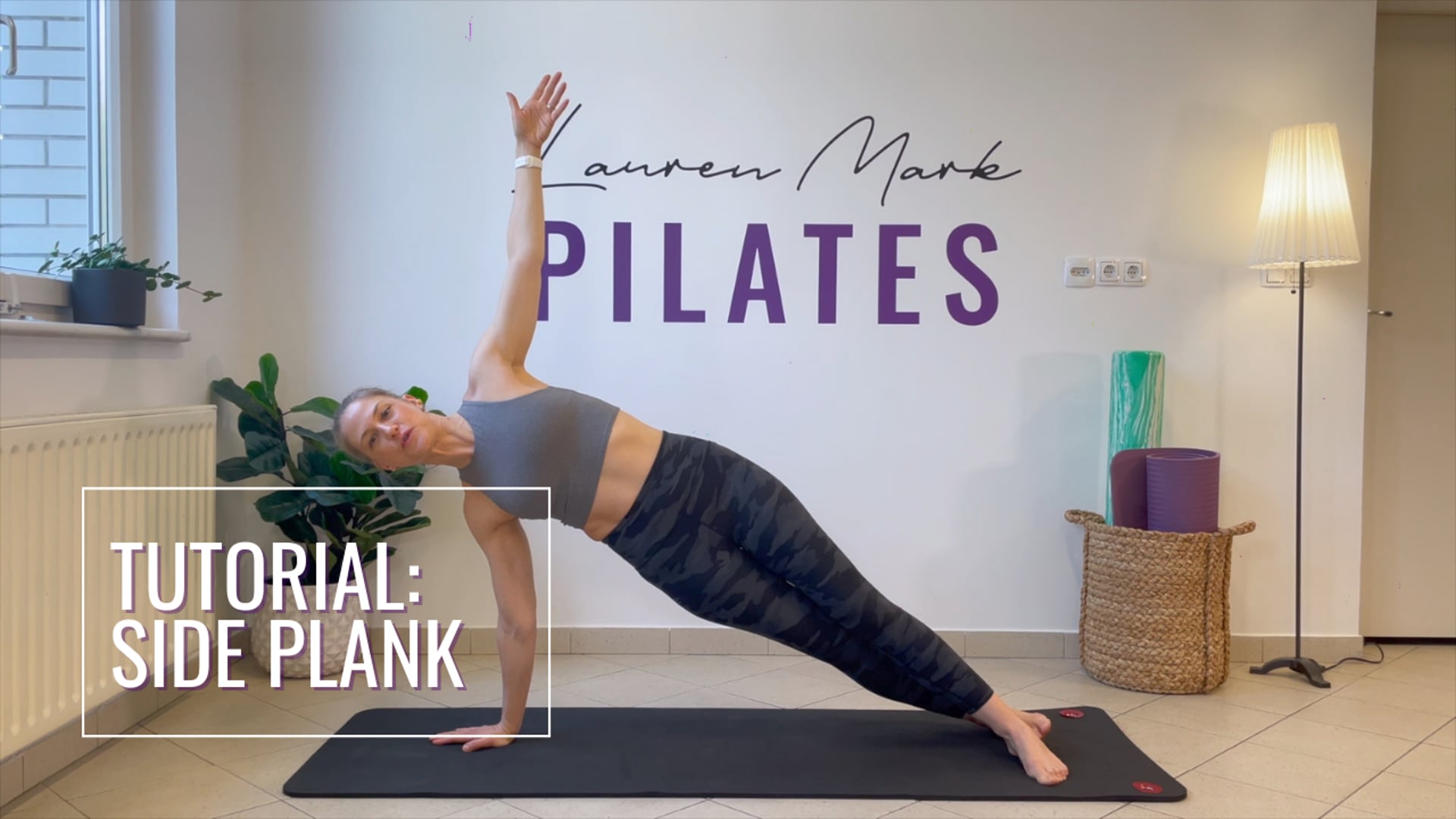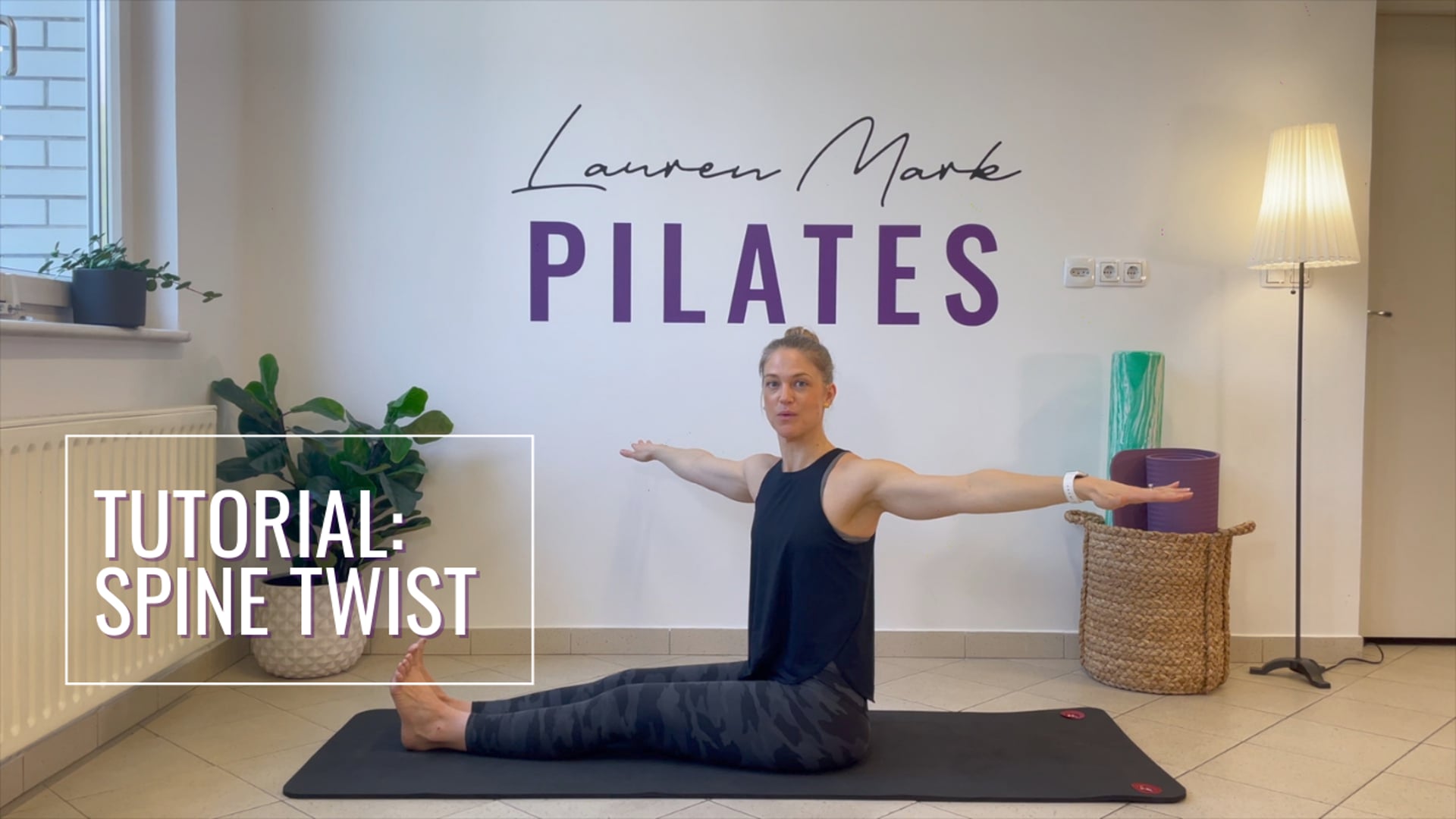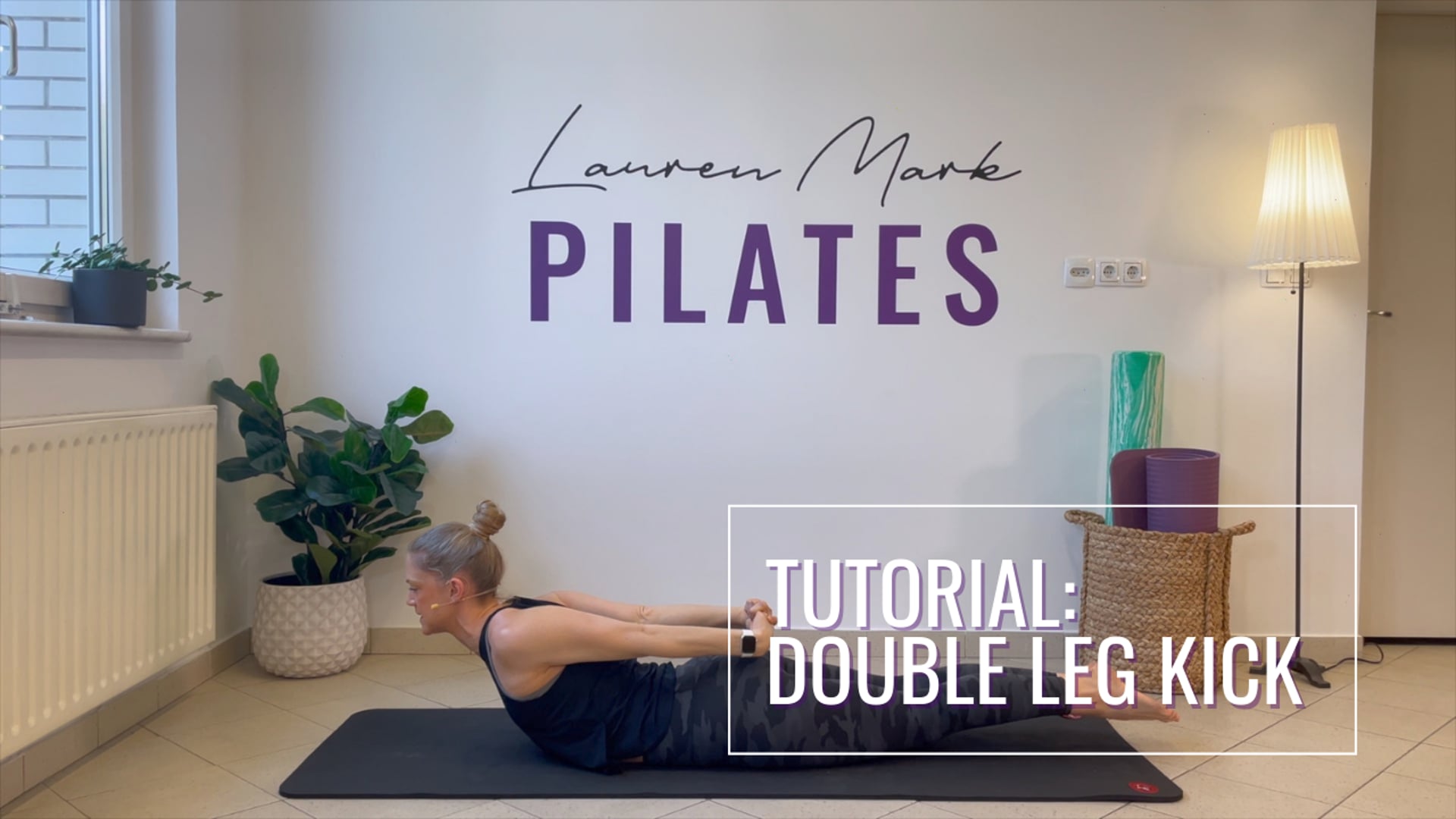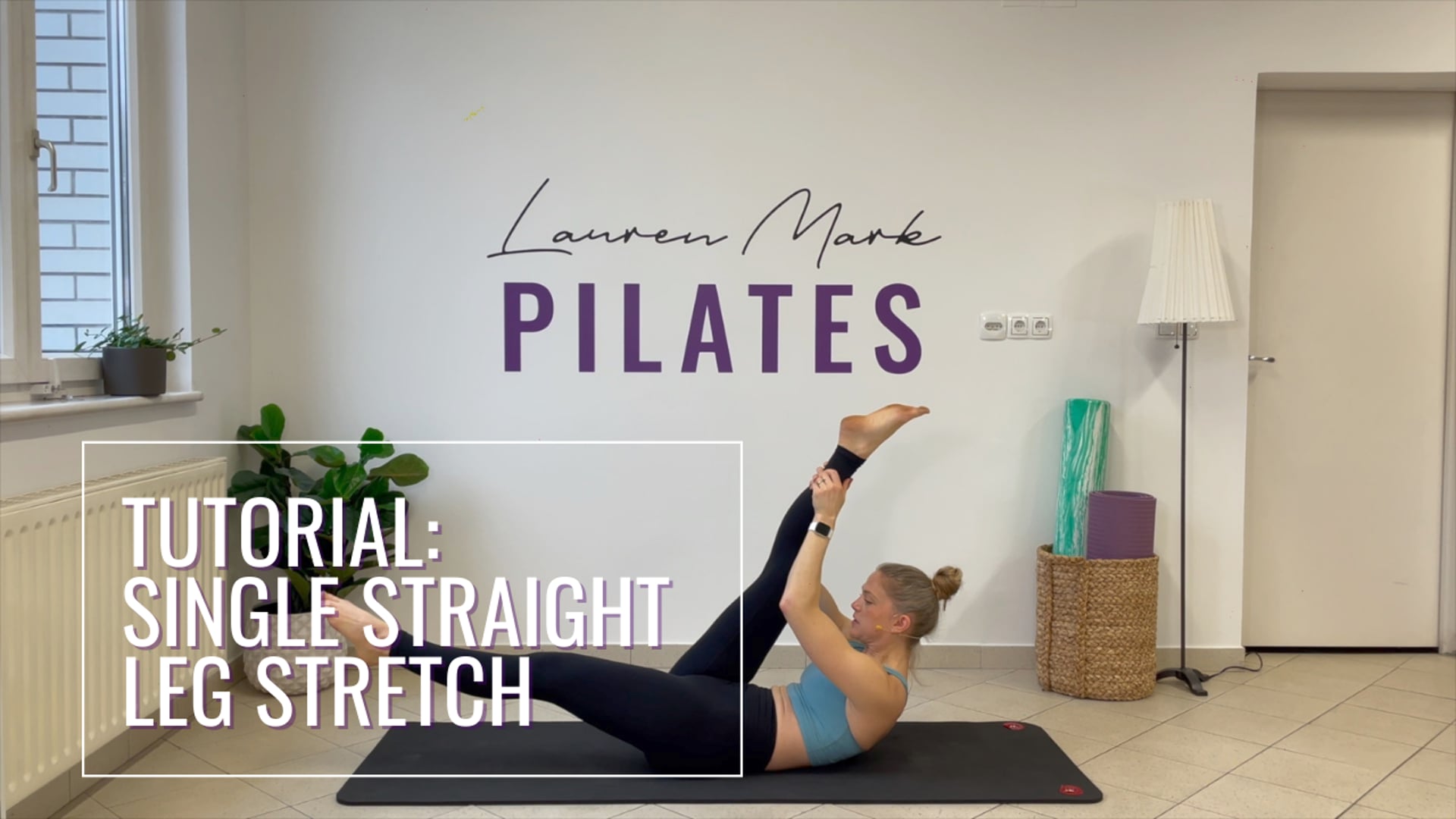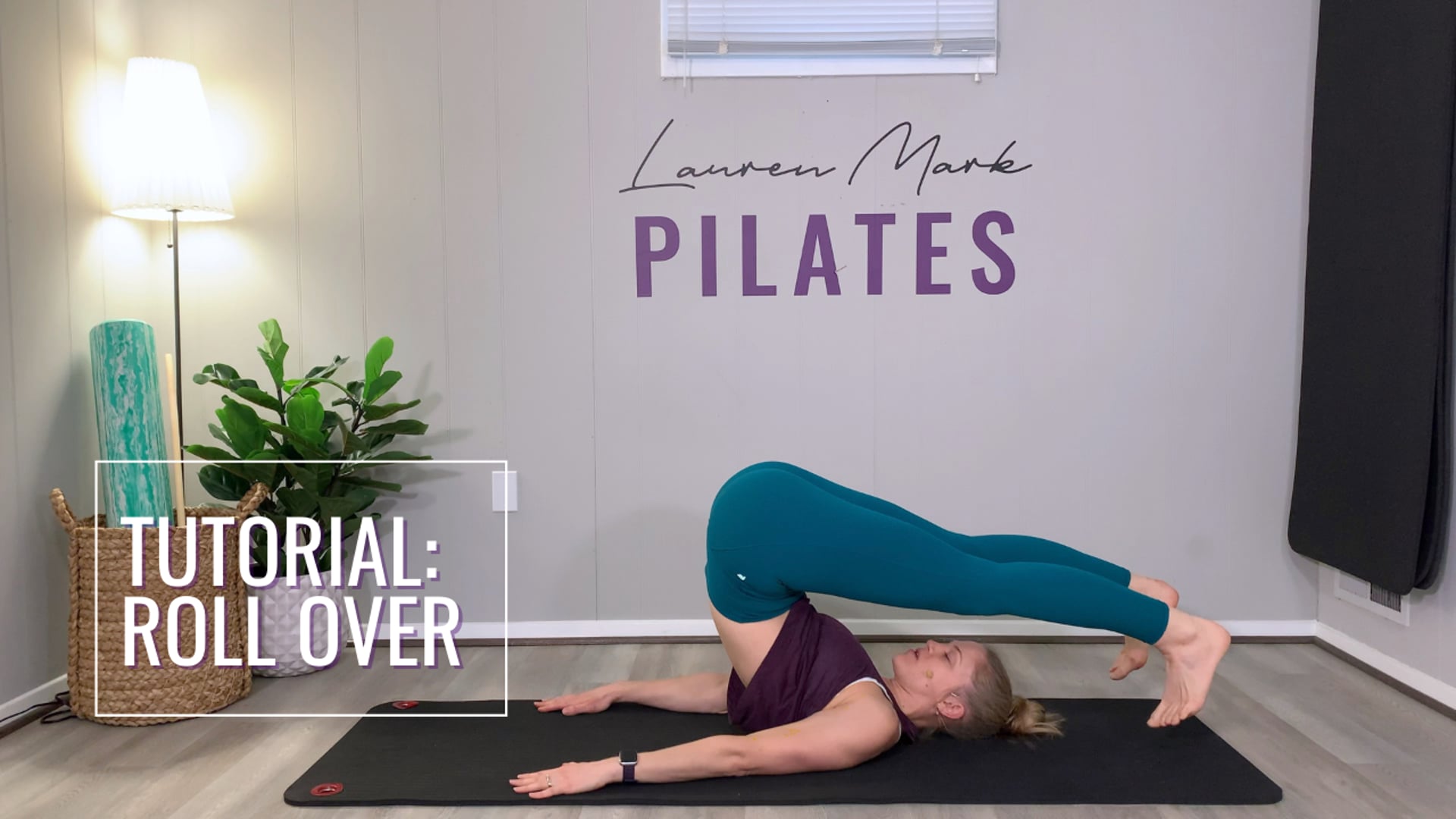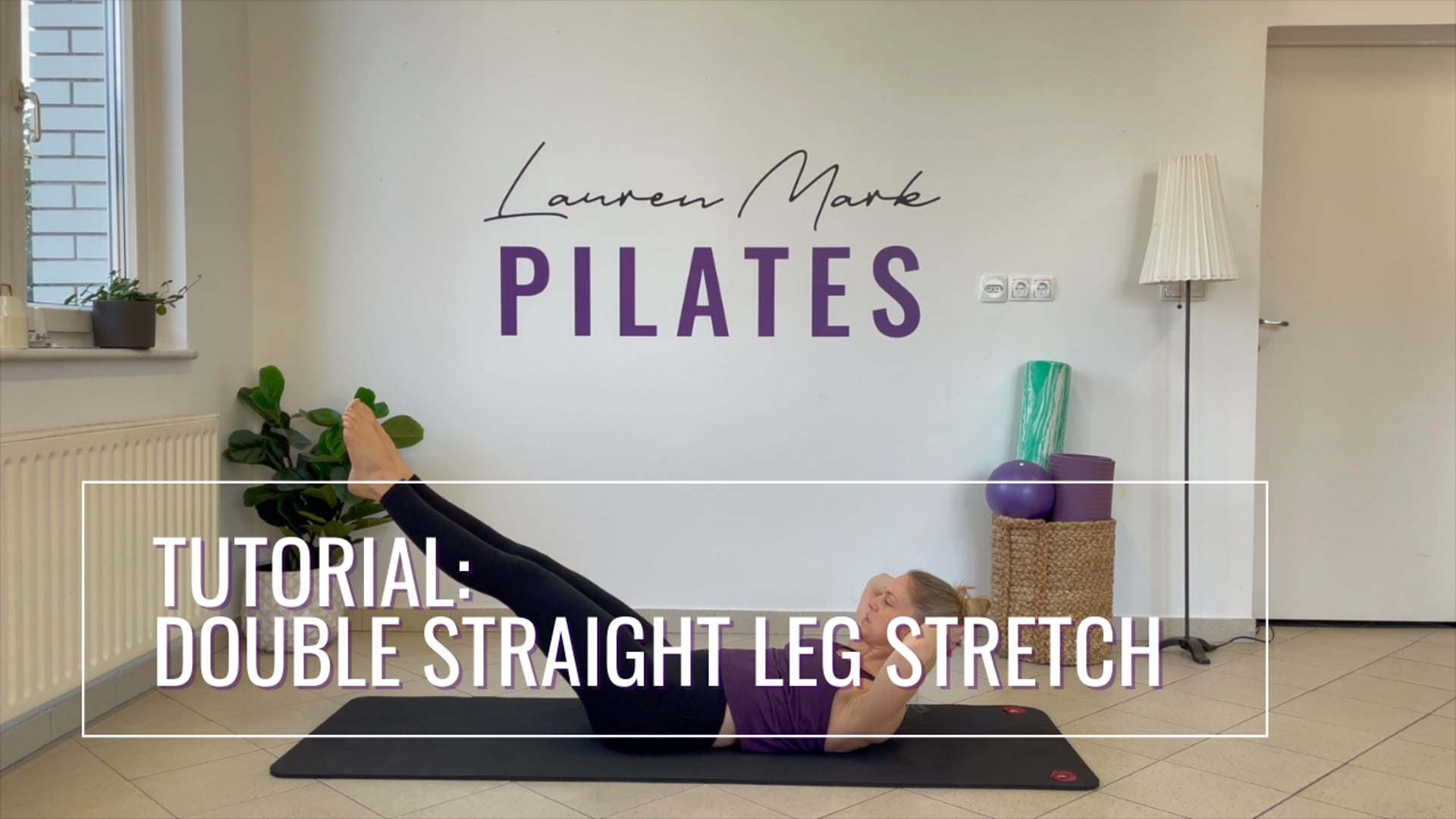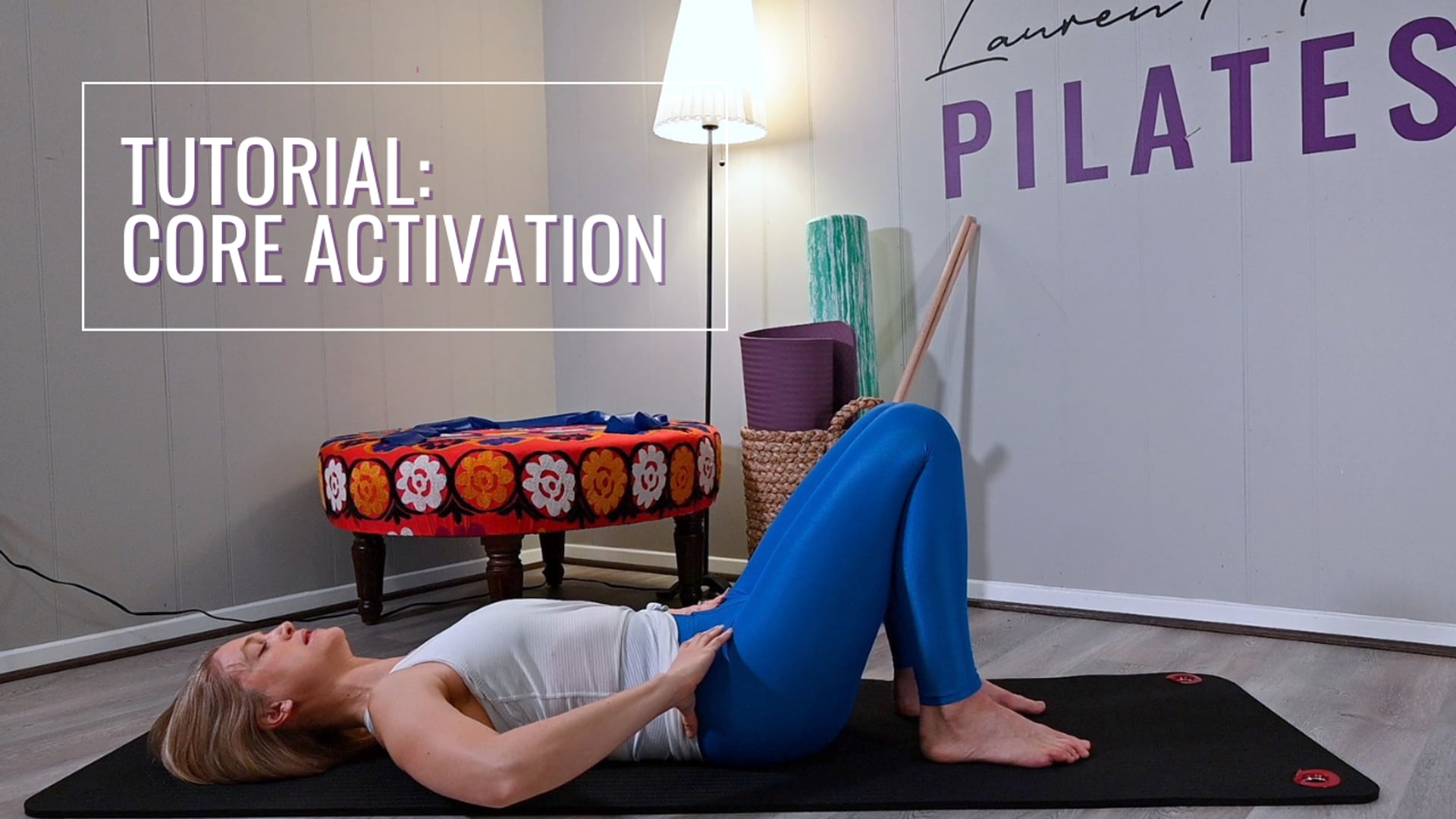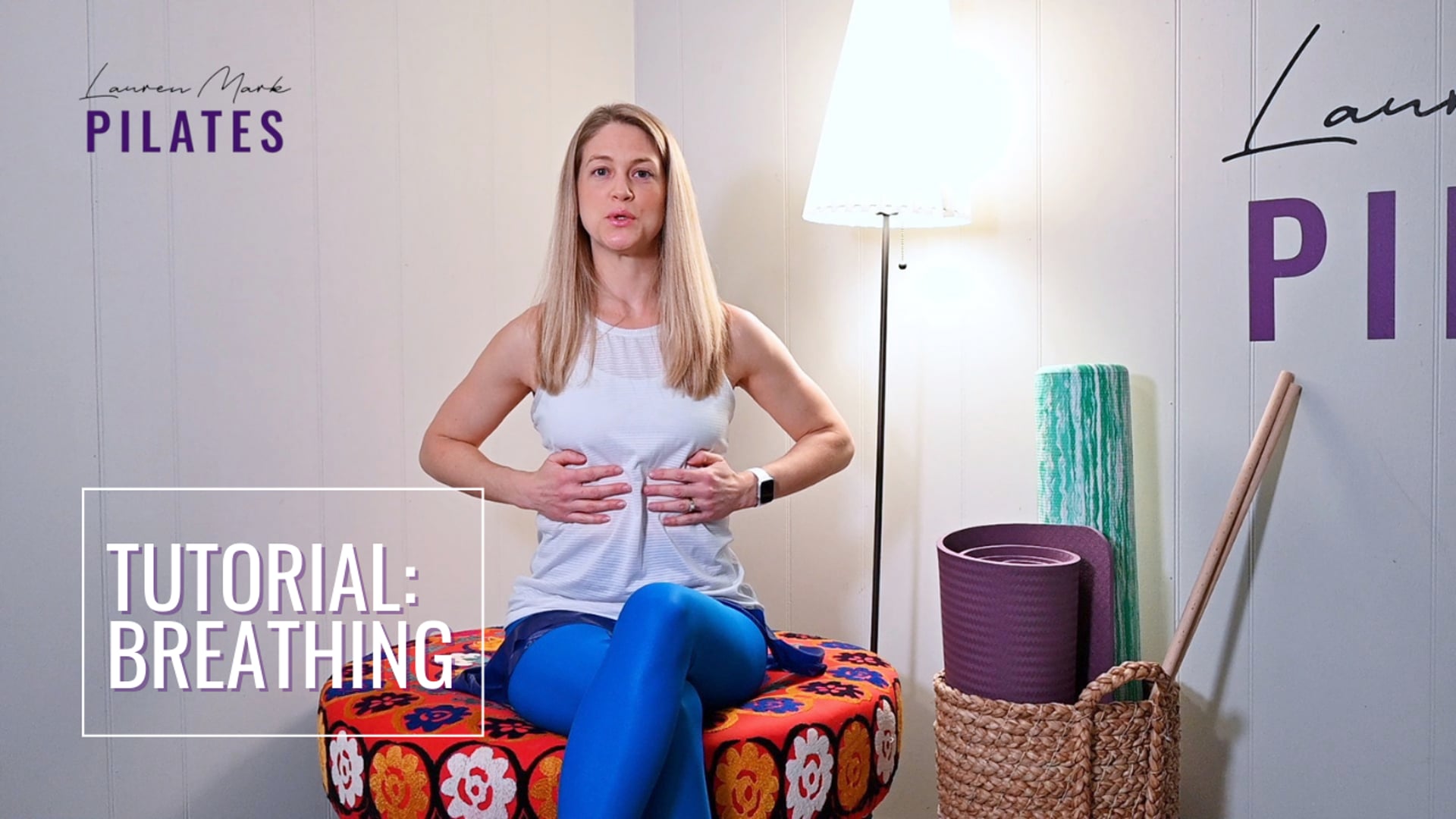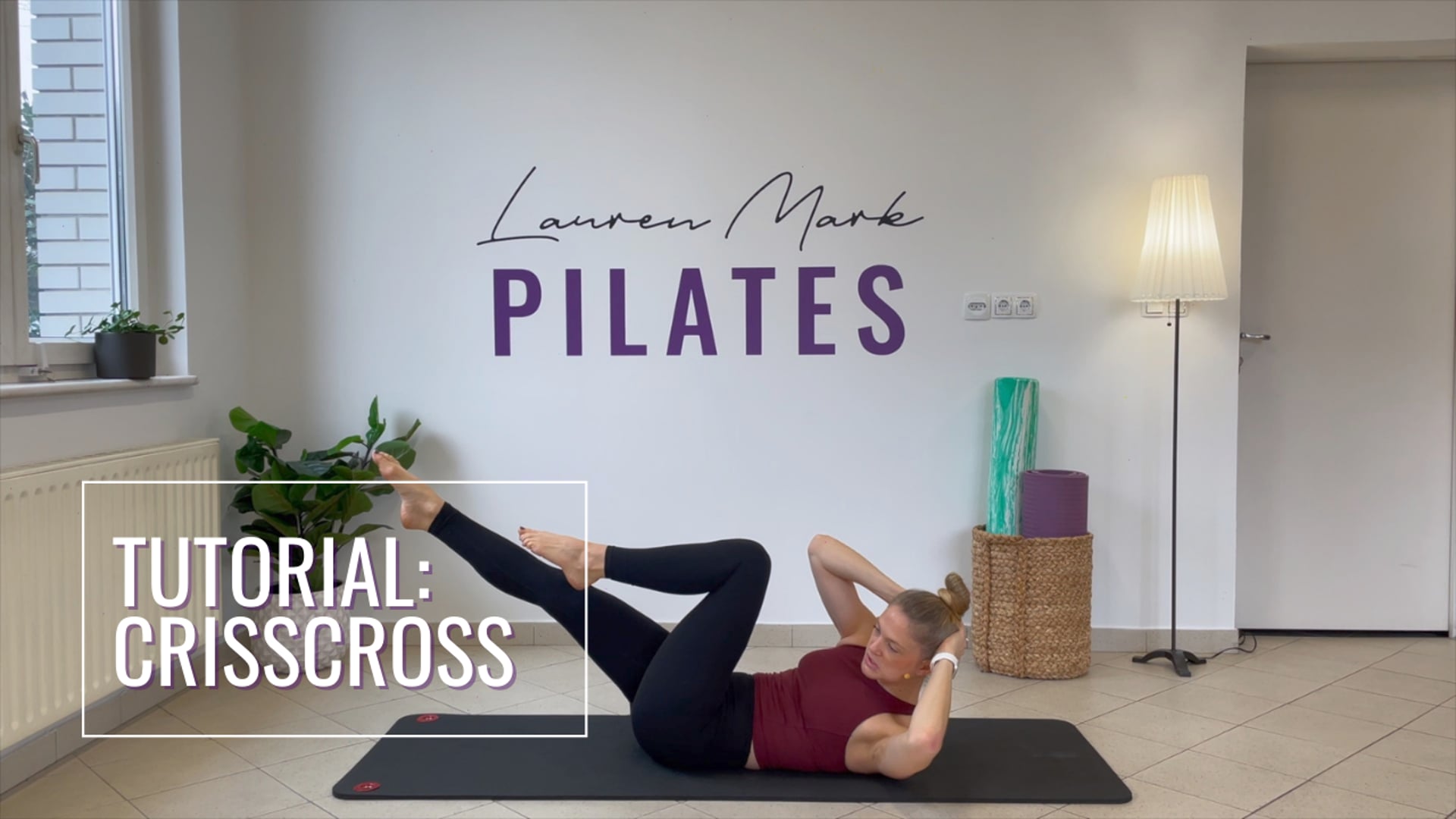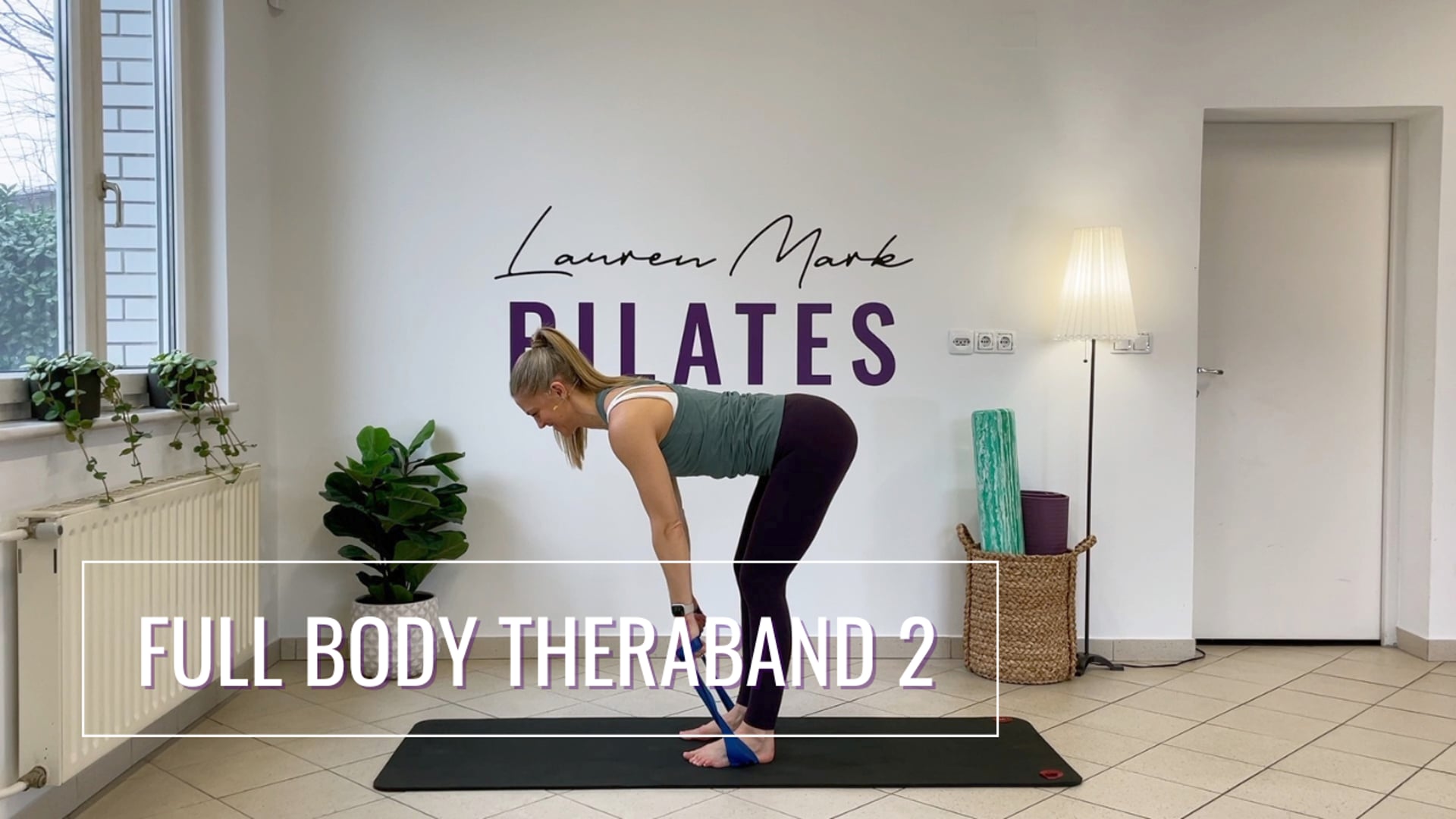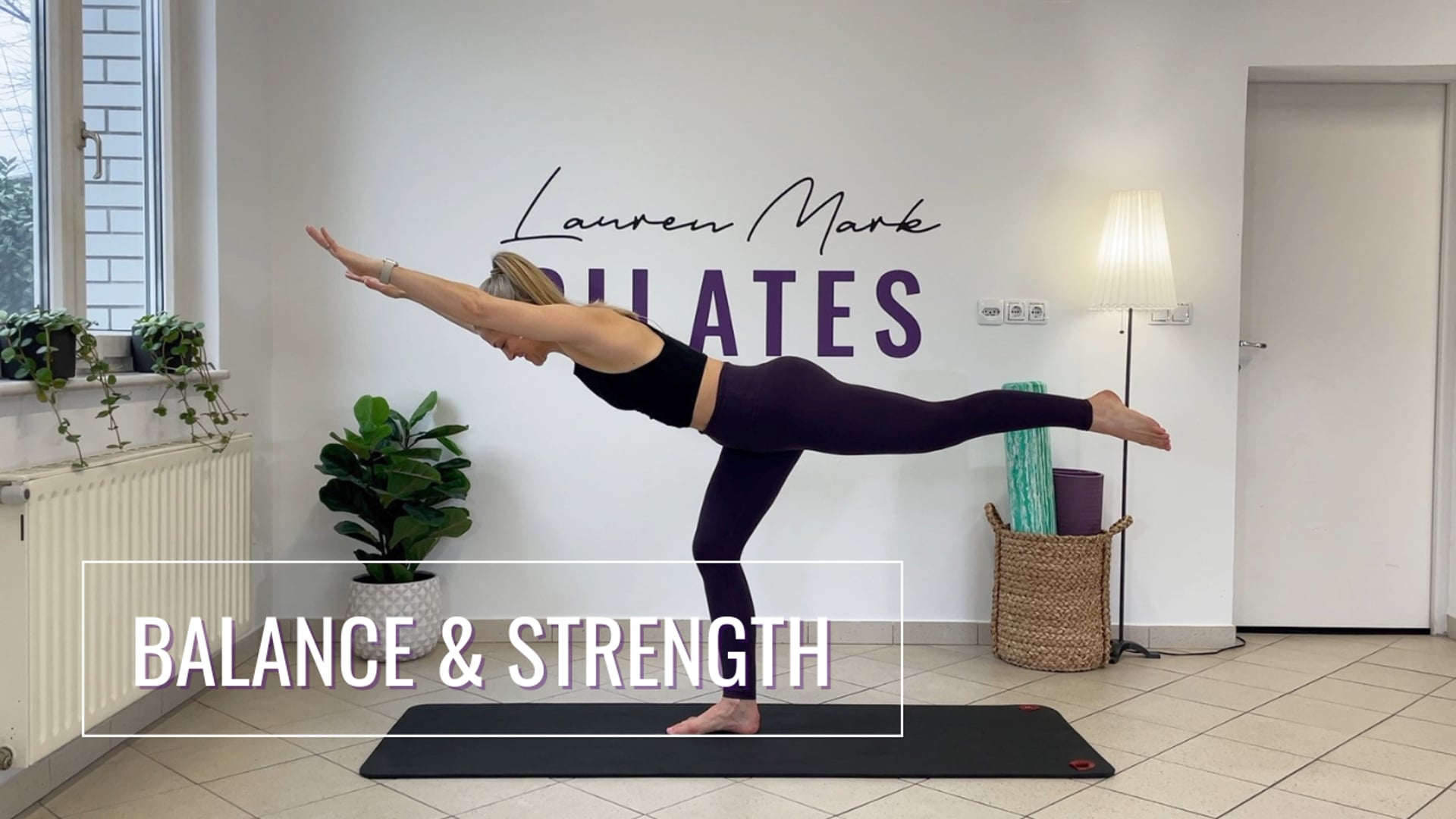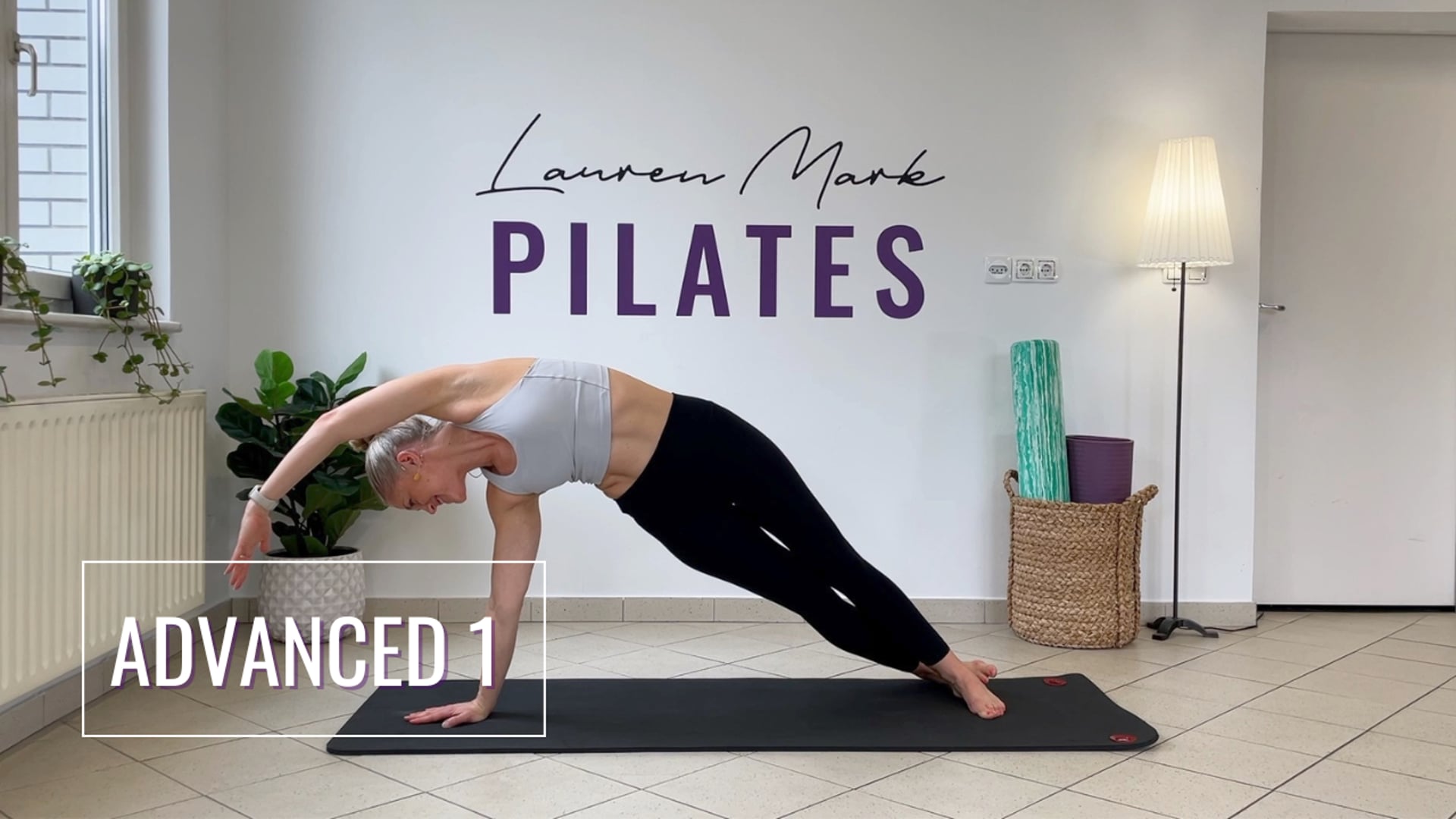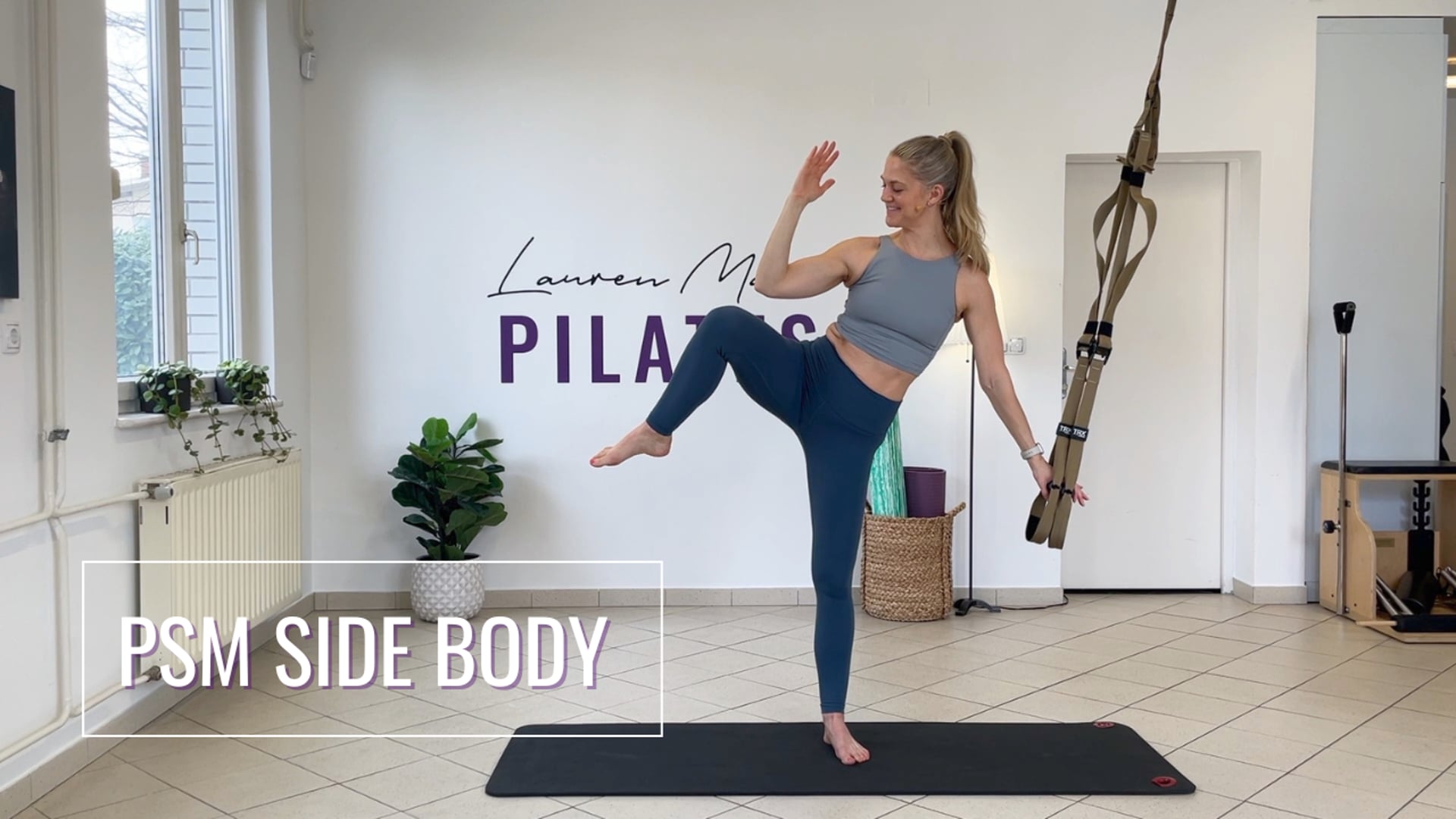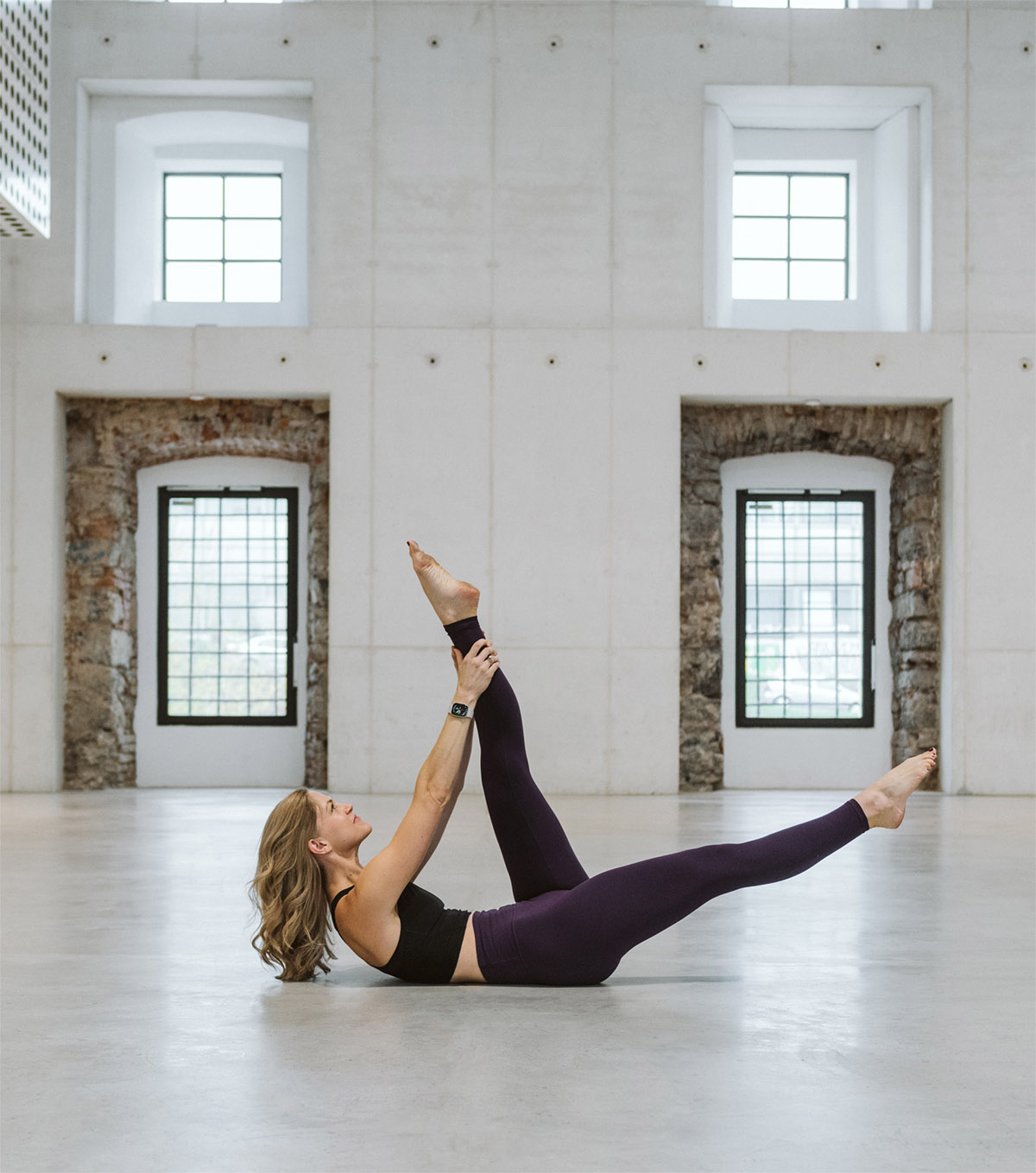Swimming is a deceivingly challenging exercise. This is a prone exercise that requires you to maintain a stable trunk while moving your long limbs in a coordinated and controlled manner. Do not forget about your abdominals, even though you are lying on them. Focus on the length more than the height of your arms and legs.
 Lauren Mark Pilates
Lauren Mark Pilates
Tutorial: Side Plank
Planks are always challenging, and side planks are even more so. In this tutorial, I break down the side plank and give you plenty of modifications and variations to challenge you where you are in your Pilates journey.
Tutorial: Spine Twist
The Spine Twist is an excellent exercise for improving the spine’s range of motion and flexibility in rotation. Keep the shoulders right over your hips. If you are tight in the back of your legs, don’t be afraid to bend the knees and/or elevate the pelvis to start from a tension-free position. If one leg gets longer or shorter as you rotate, you are likely moving your hips as you rotate your spine. Try for a smaller range of motion with lovely stable hips.
Tutorial: Double Leg Kick
The Double Leg Kick is stretch and strength wrapped up in an elegant package. Keep your hips anchored into the mat as you draw your heels towards your bottom and lift your sternum up and forward as you stretch the chest. Check out the modification if you require a little more support to still get all the benefits out of this exercise.
Tutorial: Single Leg Kick
The Single-Leg Kick is a great exercise to strengthen the back body (glutes and hamstrings especially) while building flexibility in the spine while in a supported extension. Think about being solid and stable in the torso, anchoring the pelvis into the mat, and reaching with the legs as you draw your heel towards your bottom.
Tutorial: Single Straight Leg Stretch
Like its sister exercise, the Double Straight Leg Stretch is a long leveler exercise with the legs straight and moving away from your torso.
Remember to keep a solid and stable pelvis, bend your knees to accommodate tight hamstrings, and reduce your range of motion to support the work in the abdominals. However, do not be afraid to make a significant reach for your calf or ankle to get that active stretch. Think about the abdominals pulling the legs towards you first and the arms second. Let me know if you have any additional questions or need modifications or advice for your unique body.
Tutorial: Roll Over
The Roll Over is one of the most challenging exercises in the Pilates repertoire. The Roll Over requires abdominal strength, but it also requires flexibility in the spine and hamstrings. This is not an exercise for everyone, and that is absolutely ok. You can have a fulfilling Pilates practice without ever doing a rollover or an inversion. Inversions, like the Roll Over, are not appropriate for people with osteoporosis or anyone with issues or injuries with their neck or upper back. If you have questions, please let me know.
Tutorial: Double Straight Leg Stretch
Like the Double Leg Stretch, Single Leg Stretch, and Crisscross, all the Pilates principles work together in this exercise. What makes it particularly challenging is the long leveler. Remember to keep a solid and stable pelvis, bend your knees to accommodate tight hamstrings, and reduce your range of motion to support the work in the abdominals. Let me know if you have any additional questions or need modifications or advice for your unique body.
Tutorial: Core Activation
Proper core activation is key to a great Pilates practice and really any of your fitness pursuits. This tutorial should help you to better engage your abdominals so you can protect your spine and move with integrity. Let me know if you need any clarification or have any questions.
Tutorial: Breathing
In this tutorial, I am breaking down breathing and its relation to your Pilates practice. This tutorial should help you to better connect to your breath and get the most out of your sessions.
I am using a Theraband in this tutorial, but you don’t need one. As always any questions, please let me know.
Tutorial: Crisscross
Like the Double Leg Stretch and Single Leg Stretch, this exercise is an excellent example of all the Pilates principles working together; rotation is all we add. Remember to keep a solid and stable pelvis. If you have trouble with your pelvic stability, try a smaller range of motion and stretch your legs more towards the ceiling. The rotation comes from the shoulders. Think about reaching the opposite shoulder towards the bent knee and not the elbow. The elbows should stay wide, and they will naturally follow the shoulders.

